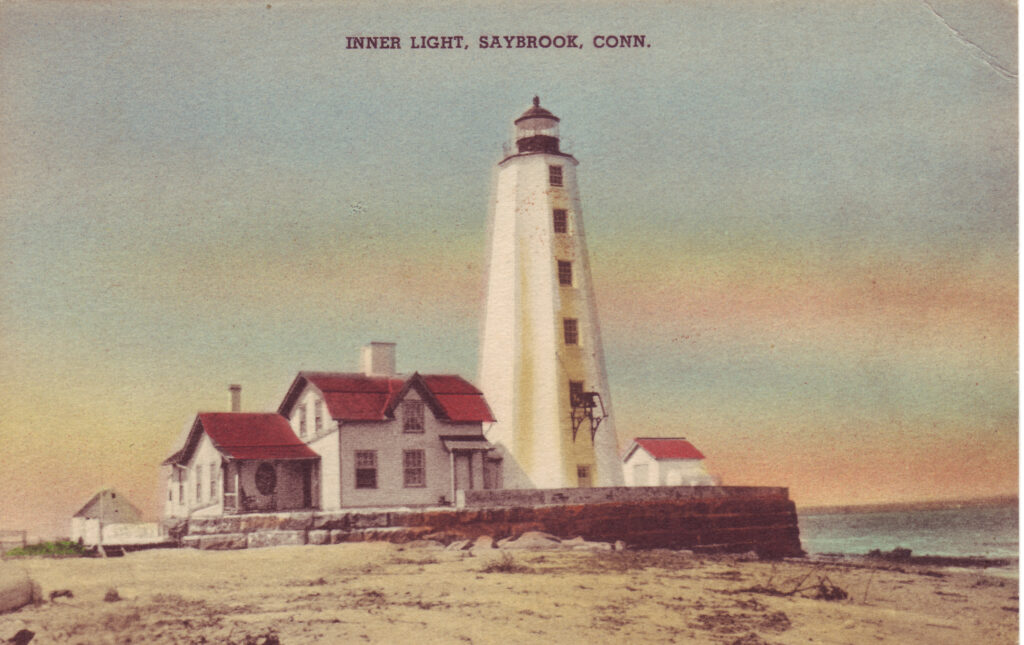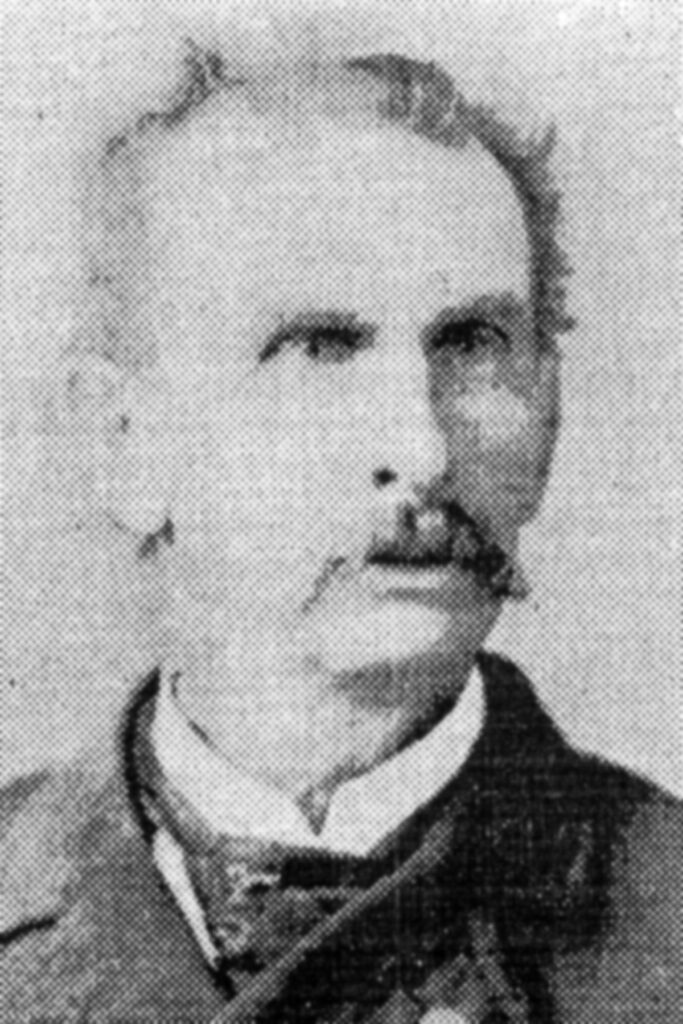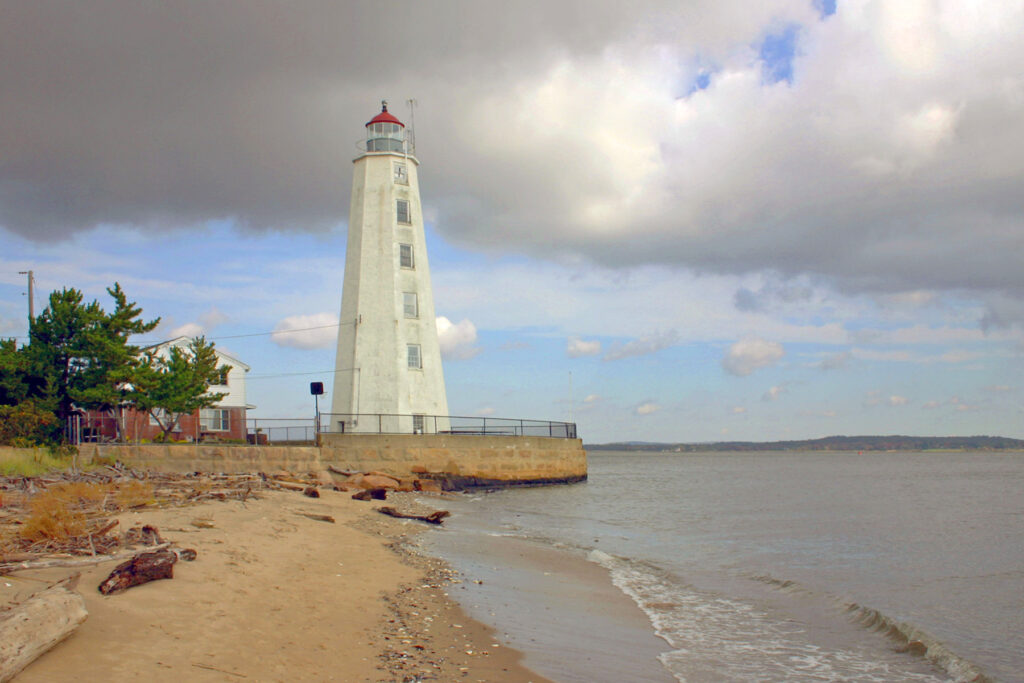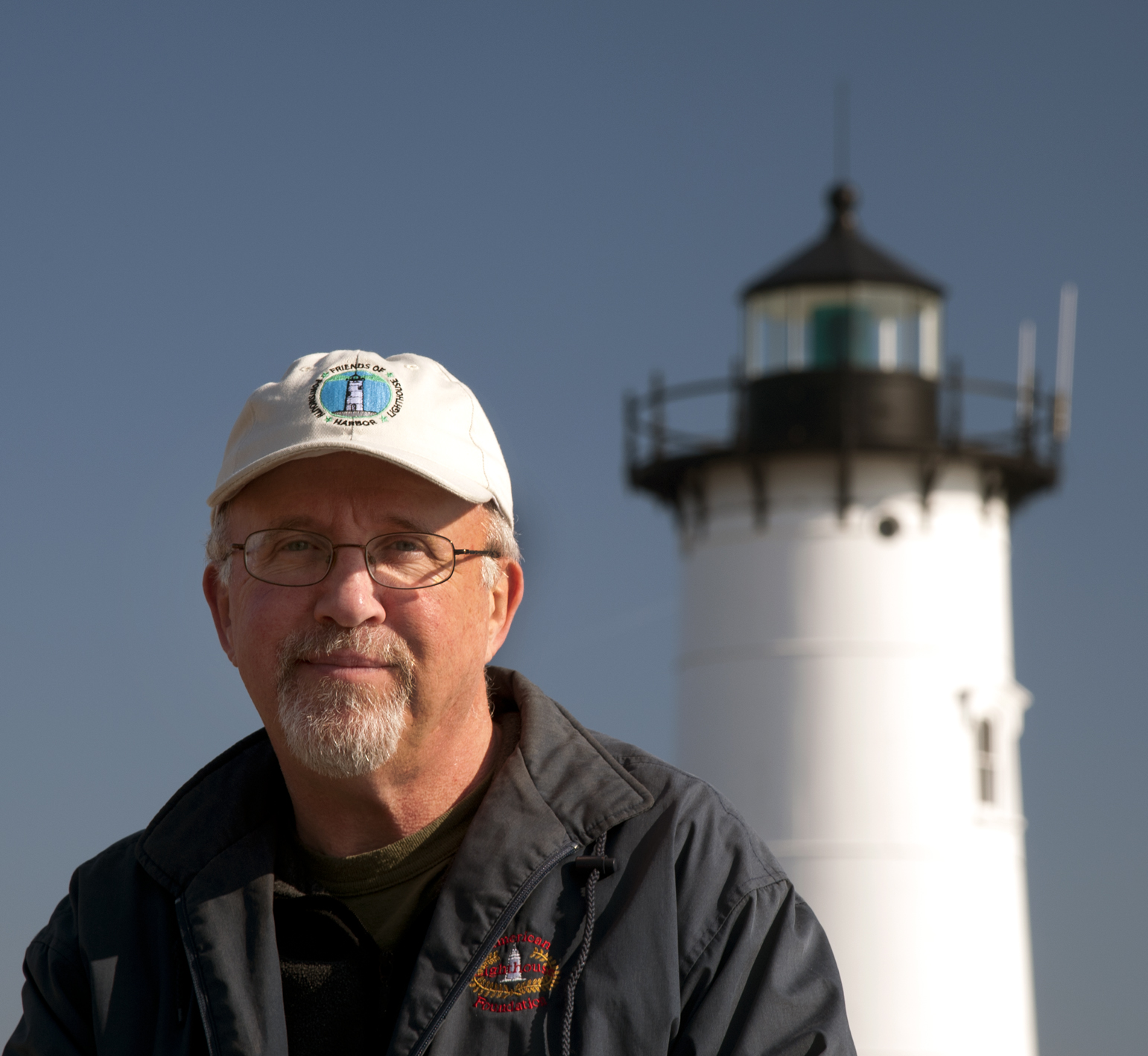
Captain Joshua K. Card here, keeping the station down at Portsmouth Harbor, New Hampshire. Today I want to tell you about an interesting keeper down the coast in Old Saybrook, Connecticut. The man was a lighthouse keeper for a quarter of a century, and you might be interested to know that he had one leg.
Lynde Point Lighthouse in Old Saybrook, on the west side of the mouth of the Connecticut River, is one of the “grand dames” of the Connecticut coast along with the white octagonal towers at New Haven and Faulkner’s Island. The mighty Connecticut is New England’s largest river, and it was the growth of commerce along the river that led to increased shipping traffic and the establishment of a light station at Lynde Point in 1803. The original 35-foot wooden tower, considered too short, was replaced by the 65-foot-tall brownstone tower that still stands today in 1838.

One of the most interesting personalities in the history of this light station was John Ninde Buckridge. Born in New York City in 1833, Buckridge joined the U.S. Navy in 1851 and in the following year traveled on a store ship to the China Sea and Japan. The vessel was the first to leave China for Japan, where the Treaty of Friendliness was signed in 1854, and it was said that Buckridge was one of the first three Americans to sleep on Japanese soil following the signing of the treaty. He later sailed on the frigate St. Lawrence from Norfolk, Virginia, under Lieutenant Commander Joseph B. Hull.
Buckridge left the Navy in 1859 but enlisted in the New York Heavy Artillery in 1862. While on a woodcutting detail at Brandy Station near Rappahannock, Virginia, his right leg was injured and later amputated, which ended Buckridge’s military career. After running a store for a few years in West Farms, New York, he joined the Lighthouse Service in 1877. Following six years as an assistant at Stepping Stones, Stratford Shoal, and Eaton’s Neck lighthouses, he was assigned as keeper at Lynde Point on June 26, 1883.

John Ninde Buckridge was a well-loved and respected keeper and citizen during his nineteen years at Lynde Point. A newspaper reported in 1890: “The grounds about the light he has arranged in a strikingly beautiful manner, and in summer they blossom as a rose, and are a favorite resort.” He and his wife, Margaret (Abel), had six children. The first and last were both named Elizabeth, and both died young. Their son Thomas went on to become a lighthouse keeper at Saybrook Breakwater Light, among other locations.
The Buckridges’ daughter Minnie married Ezra Kelsey of Westbrook, Connecticut, at the lighthouse on March 22, 1890. Although the day was described as bleak and blustery, nearly 100 people attended. The happy couple left “amid the hoarse screech of congratulatory steamer whistles on the river and the customary shower of rice and old slippers.” Ezra Kelsey later became a lighthouse keeper at Rockland Lake Light on the Hudson River and Crown Point Light on Lake Champlain.

Margaret Buckridge narrowly escaped death or serious injury one day in April 1901 when a sudden gust of wind knocked her off the seawall near the lighthouse. She fell about ten feet to the rocks, fracturing several ribs and getting knocked unconscious in the process. When she came to, Margaret realized that the tide was coming in and that nobody could hear her cries for help. She managed to drag herself to safety and eventually recovered.
Keeper Buckridge’s son Tom served as an unpaid assistant until his own marriage in 1901. John Ninde Buckridge retired from the Lighthouse Service the following year. When he died a decade later a newspaper obituary remembered him in fond terms: “Always good natured and possessing a keen sense of humor, he had a bright word or a joke for everyone with whom he came in contact up to within a few days of the end. He was one of nature’s noblemen—‘a gentleman of the old school.’”

Jeremy D’Entremont is the author of more than 20 books and hundreds of articles on lighthouses and maritime history. He is the president and historian for the American Lighthouse Foundation and founder of Friends of Portsmouth Harbor Lighthouses, and he has lectured and narrated cruises throughout the Northeast and in other regions. He is also the producer and host of the U.S. Lighthouse Society podcast, “Light Hearted.” He can be emailed at Jeremy@uslhs.org

